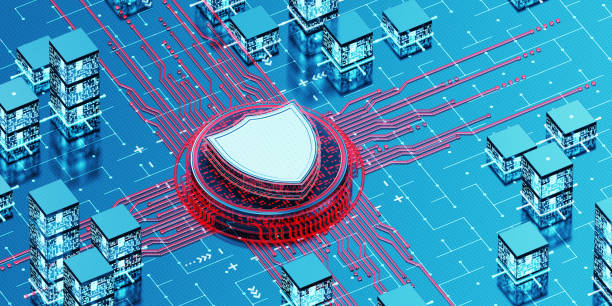
The digital landscape is rapidly expanding with the advent of the Internet of Things (IoT), connecting devices and data in ways previously unimaginable.
One critical aspect of IoT is the creation of low-power sensor networks, which play a pivotal role in collecting and transmitting data efficiently.
In this guide, we will explore the world of designing low-power IoT sensor networks, understanding their significance, and uncovering the strategies to optimise their performance.
All About the Essence of Low-Power IoT Sensor Networks

According to Embedded.com, Low-power sensor networks are the backbone of many modern applications, from smart cities to industrial automation.
Their ability to operate on minimal energy resources ensures longevity, reduces operational costs, and contributes to a greener environment.
When designing a low-power IoT sensor network, the primary goal is to strike a balance between functionality and power consumption.
These networks are optimised to capture, process, and transmit data with the least amount of energy, enabling the seamless operation of devices in remote or hard-to-reach locations.
Selecting the Right Components and Protocols
The foundation of any effective IoT sensor network lies in selecting the appropriate hardware components and communication protocols.
The choice of microcontrollers, sensors, and wireless modules greatly impacts the network’s efficiency and power consumption.
For instance, utilising ultra-low-power microcontrollers and energy-efficient wireless protocols such as Zigbee or LoRaWAN can significantly extend the network’s battery life.
Each component should be evaluated not only for its functional capabilities but also for its energy efficiency.
Efficient Data Collection and Transmission Strategies
Data collection and transmission are crucial functions of an IoT sensor network. To maximise energy efficiency, strategies like duty cycling and sleep modes can be employed.
DirectScience.com says duty cycling involves periodically waking up the sensor node to perform its task and then returning to a low-power sleep mode to conserve energy.
Moreover, employing optimised data compression techniques reduces the amount of data that needs to be transmitted, thereby conserving energy and bandwidth.
These strategies collectively ensure that the network operates with minimal power consumption.
Power Harvesting Techniques for Sustainable Energy
A groundbreaking approach to enhancing the energy efficiency of low-power IoT sensor networks is power harvesting.
This technique involves capturing energy from the environment, such as solar, thermal, or kinetic energy, and converting it into electrical power to sustain the network.
Power harvesting not only extends the lifetime of battery-powered devices but also opens the door to deploying sensors in remote or inaccessible locations where battery replacement is challenging.
Designing for Scalability and Flexibility
IoT networks are not static; they evolve and expand over time. Designing for scalability ensures that the network can accommodate an increasing number of devices without compromising performance.
Additionally, flexibility in the network’s architecture allows for seamless integration of new sensors and devices.
By employing modular and extensible designs, network administrators can easily add or remove devices, adapt to changing requirements, and maintain optimal performance.
Implementing Edge Computing for Reduced Data Transfer
The integration of edge computing into IoT sensor networks is a game-changer.
Edge computing involves processing data closer to its source, minimising the need for extensive data transfer to a central server.
This approach conserves energy by reducing the amount of data that needs to be transmitted and processed.
By distributing computational tasks among sensor nodes, edge computing optimises the network’s performance while saving energy and reducing latency.
Security and Privacy Considerations
As IoT devices become more interconnected, security becomes a paramount concern.
Securing IoT sensor networks is essential to prevent unauthorised access, data breaches, and cyberattacks.
Implementing robust encryption protocols, authentication mechanisms, and secure boot procedures ensures the confidentiality and integrity of the data being transmitted.
Moreover, user privacy must be safeguarded by adhering to data protection regulations and providing clear consent mechanisms for data collection and usage.
Real-World Applications and Success Stories
Low-power IoT sensor networks have revolutionised various industries by enabling innovative applications.
In agriculture, these networks aid in crop monitoring and irrigation control, optimising resource utilisation.
Smart cities leverage these networks for efficient waste management, traffic monitoring, and environmental sensing.
Healthcare benefits from wearable devices that continuously monitor patients’ vital signs, enabling remote health tracking and timely interventions.
By exploring these real-world examples, we can understand how low-power IoT sensor networks are shaping our daily lives.
Overcoming Challenges and Future Trends
While low-power IoT sensor networks offer substantial benefits, they also come with challenges.
Power budget constraints, interoperability issues, and the need for standardisation are areas that continue to be addressed.
Despite these challenges, the future of IoT holds immense promise, with advancements in energy-efficient technologies and increased collaboration among industry players.
As the IoT landscape evolves, trends like 5G connectivity, machine learning integration, and advanced energy harvesting techniques will further enhance the capabilities of low-power IoT sensor networks.
It is okay my dear readers, now let’s look into some frequently asked questions (FAQs) about
How can I ensure the longevity of my IoT sensor network’s battery life?
Efficient data collection, sleep modes, and power harvesting techniques are key to extending battery life in low-power IoT sensor networks.
Is power harvesting suitable for all environments?
Power harvesting effectiveness depends on factors like energy availability, location, and sensor power requirements.
It’s essential to assess the feasibility of power harvesting for your specific use case.
Can edge computing work effectively with low-power IoT networks?
Yes, edge computing is particularly beneficial for low-power IoT networks as it reduces the need for extensive data transfer and minimises energy consumption.
What measures can I take to ensure the security of my IoT sensor network?
Implement robust encryption, secure authentication methods, and regular security updates to protect your IoT sensor network from cyber threats.
What’s the significance of flexibility in IoT network design?
Flexibility allows your network to adapt to changing requirements, seamlessly integrate new devices, and stay relevant in a dynamic technological landscape.
Conclusion
Shaping the Future with Low-Power IoT Sensor Networks
The journey of designing a low-power IoT sensor network is a blend of technology, innovation, and sustainability.
By selecting the right components, implementing efficient data strategies, harnessing power from the environment, and prioritising security, you can create networks that not only conserve energy but also empower new possibilities.
Low-power IoT sensor networks have the potential to revolutionise industries, improve quality of life, and create a more connected world.
By embracing the principles outlined in this guide and staying abreast of emerging trends, you can contribute to the ongoing transformation of our digital ecosystem.








